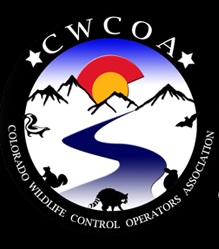(Vol 2, Art 1, April, 2013)
The life of a coyote over the course of a year can be separated roughly into four phases or seasons: 1) courting/breeding: predominantly January – February; 2) gestation/whelping: March – April (generally 63 days); 3) pup rearing: May – August; 4) dispersal: September – December. By December most pups of the year have reached adult size and weight although some won’t reach peak size for two years or more.
Coyotes are quite social and have a fairly well-defined social structure. They are somewhat less social than wolves in some ways, but more so than more solitary red and grey foxes. Ultimately there are four social categories: resident alpha (or territorial) pairs, resident packs, solitary (non-territorial) individuals, and large feeding groups (or aggregations). Resident pairs are alpha or dominant adults. Resident natal packs include an alpha pair, betas (adults and yearlings subordinate to alphas), and pups (young of the year). Solitary individuals can be variously described as transients, nomads or “unaffiliateds.” Aggregations of seven or more coyotes can be a combination of all of the above and are generally temporary congregations around a large biomass food source. The food source is usually in the form of ungulate (hoofed animal) carrion (e.g., a fresh deer or cow carcass), but can be concentrations of live prey such as winter herds of deer or antelope.
Except for these large feeding aggregations, resident pairs and packs actively defend well-defined territories against other coyotes. They do so directly with aggressive chasing and fighting and indirectly by scent marking and vocalizing. Scent marking in the form of urine and feces, sometimes coupled with “scratch-backs,” is common along territorial borders. Scent marking and scratch-backs by males peak prior to and at the onset of breeding (January – February). Scent marking by females increases in association with whelping and pup rearing (April- May). Territoriality is most defined from mating through pup rearing (February – August). It can wane during other times of the year. Some researchers describe territories as a “land-tenure system,” meaning specific territories can be maintained over several years or even several generations.
Solitary coyotes without territories tend to have larger, more loosely defined home ranges that may overlap or skirt territories of other coyotes. These transients or nomads tend to be dispersing pups (yearlings) or lower-ranking beta adults. They are often looking to rejoin their natal group, join other groups (packs), or create their own territories.
Almost from birth aggressive-passive interaction between coyotes begins to establish dominance or pecking order that carries over to adult life, ultimately separating alphas from betas and prompting dispersal. Some would suggest that all coyote interactions, including vocalizations, are simply expressions of where an individual is found on the aggressive-passive (or dominant-submissive) scale. Within natal packs and even feeding aggregations there is a definite pecking order of who eats first, most, or not at all.
Not a lot is known about coyote energy and water requirements. We do know that coyote diet varies seasonally largely based on availability of food sources. In winter, ungulate prey and carrion, plus rabbits and voles, are significant food sources. Road killed mammals are a big
source in more suburban/urban areas. At least one study indicated coyotes need on average roughly 1.3 pounds of meat per day. There are indications that coyotes tend to rest more and hunt less in winter, especially when carrion in available, likely as an energy conservation measure. However, it is common knowledge among hunters and trappers that coyote activity peaks immediately prior to and after winter storms. Water needs are even less known, but we know coyotes can thrive in rather arid conditions. Apparently they can get a lot of mileage from dew/frost, snow and moisture within fresh prey. Generally, coyotes live in summer where they can survive in winter.
Courting and pairing can start as early as December. Mating can occur from late January to early March, but seems to peak mid to late February in many areas. Strong pair bonds can and do exist, but not always. Some coyotes stay paired for many years. But, bonds can be broken by injury, disease or death, or by changes in alpha-beta dominance. Also, it’s not unusual to observe a female in heat being pursued closely by three to even eight or more males, with the female mating with multiple males in rapid succession. Apparently, the female decides who will be her ultimate mate.
Such is the life of a coyote in winter.
